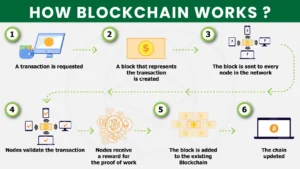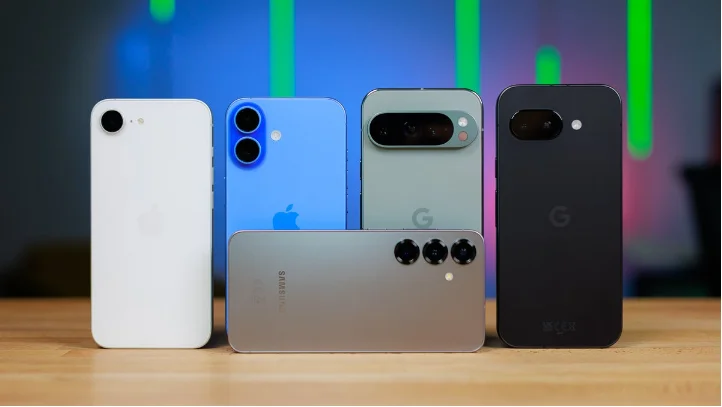Blockchain Basics: A Simple Guide for Beginners
Blockchain is the base on which modern cryptocurrency runs and it is one of the most important digital technologies of this era. It was first designed to support Bitcoin but over time it has expanded into many more uses like decentralized finance DeFi supply chain monitoring real world asset tokenization and connecting with artificial intelligence AI.
By 2025 knowing how blockchain works has become necessary not only for crypto traders but for anyone who is part of the growing digital economy. This guide breaks down how blockchain is built what its parts are and where it is used in simple language. It also explains how platforms like Token Metrics use blockchain information to guide investors toward better decisions.
What Is Blockchain
In simple terms blockchain is a shared digital ledger that records transactions across multiple computers. Unlike normal databases that are controlled by one company blockchain works through a decentralized network which makes it safe transparent and hard to tamper with.
Every entry is grouped into a block and these blocks connect together in order which is why the system is called a blockchain.

Key Features of Blockchain
Decentralization
The network is not controlled by any one person. Instead many participants called nodes help maintain it.
Transparency
All participants can see the transactions which builds trust and reduces chances of fraud.
Immutability
Once information is added to the blockchain it cannot be changed or removed.
Security
Blockchain uses strong cryptography to protect transactions and user identities.
How Blockchain Works Step by Step
Transaction Creation
The process starts when someone sends a transaction like transferring cryptocurrency or starting a smart contract.
Verification by Nodes
The transaction is sent to a group of computers called nodes. These nodes check if it is valid through systems like Proof of Work PoW or Proof of Stake PoS.
Block Creation
After verification the transaction is combined with others inside a new block.
Adding the Block to the Chain
This new block is linked to the previous block creating a chain.
Consensus and Finalization
The network agrees that the block is valid and adds it permanently to the ledger.
Consensus Mechanisms How the Network Agrees
Consensus mechanisms are methods that allow all nodes to agree on the state of the blockchain.
Proof of Work PoW
Used by Bitcoin where miners solve difficult puzzles to validate transactions.
Proof of Stake PoS
Used by Ethereum and many other chains in 2025 where validators lock tokens as collateral to approve transactions. It is more energy efficient.
Other Models
Systems like Delegated Proof of Stake DPoS and Proof of Authority PoA aim to improve both speed and security.
Components of a Blockchain
Blocks
Contain transaction details a timestamp and a cryptographic hash.
Nodes
Computers that store and validate the blockchain.
Smart Contracts
Self running agreements written directly into the blockchain.
Cryptographic Keys
Digital signatures that verify users and secure transactions.
Public vs Private Blockchains
Public Blockchains
Open networks like Bitcoin and Ethereum where anyone can join.
Private Blockchains
Restricted networks used by companies for tasks like supply chain management.
In 2025 mixed models that combine both public and private features are becoming more common for better balance of transparency and privacy.
Applications of Blockchain in 2025
Cryptocurrencies
The main use remains peer to peer digital payments through coins like Bitcoin Ethereum and Token Metrics AI TMAI.
DeFi
Platforms for lending borrowing and trading without middlemen.
Real World Assets RWAs
Turning physical items like property or commodities into digital tokens.
AI and Analytics
Platforms like Token Metrics use blockchain data to give AI based investment insights.
Supply Chain Management
Tracking goods clearly from start to finish.
Identity Management
Protecting digital identities and reducing online fraud.
Benefits of Blockchain
Enhanced Security
Its cryptographic design makes it extremely hard to hack or change data.
Reduced Costs
Removes middlemen which saves money on fees and operations.
Improved Efficiency
Allows faster transactions especially on PoS networks.
Global Access
Anyone with internet can join public blockchains.
Challenges Facing Blockchain
Scalability
Many networks struggle to handle large traffic.
Regulatory Uncertainty
Governments are still deciding how to manage blockchain assets.
Energy Use
PoW still creates environmental concerns though PoS uses less energy.
Adoption Barriers
People and companies still need better tools and more knowledge to use blockchain widely.
How Token Metrics Uses Blockchain Data
Platforms like Token Metrics take blockchain further by
Analyzing on chain data like wallet movements transaction levels and developer activity
AI powered ratings that score tokens using more than 80 different factors from tech strength to sentiment analysis
Portfolio optimization that helps investors build and manage crypto portfolios
With the clarity of blockchain combined with AI analysis Token Metrics gives a full picture of crypto investments.
Practical Tips for Understanding Blockchain
Try using crypto wallets to understand how transactions work
Use blockchain explorers like Etherscan to watch live transactions
Follow major blockchain projects like Ethereum Polygon and Token Metrics AI TMAI
Use tools like Token Metrics to read and understand complex blockchain data
The Future of Blockchain
By 2025 blockchain is expanding far beyond cryptocurrency. With new improvements in scalability tokenizing real world assets and linking with AI blockchain is shaping modern finance digital identity and decentralized apps.
As businesses governments and investors adopt blockchain its importance in the digital world will keep increasing.
Conclusion
Blockchain is more than a trending term. It is a powerful technology that is pushing innovation across many sectors. By understanding how blockchain works including its structure systems and uses you can navigate both the crypto market and the wider digital economy more easily.
Platforms like Token Metrics make blockchain data easy to understand with AI driven insights that help investors benefit from this fast growing technology. In 2025 learning blockchain basics is not just useful it is necessary for anyone who wants to be part of the future of finance and digital ownership.




